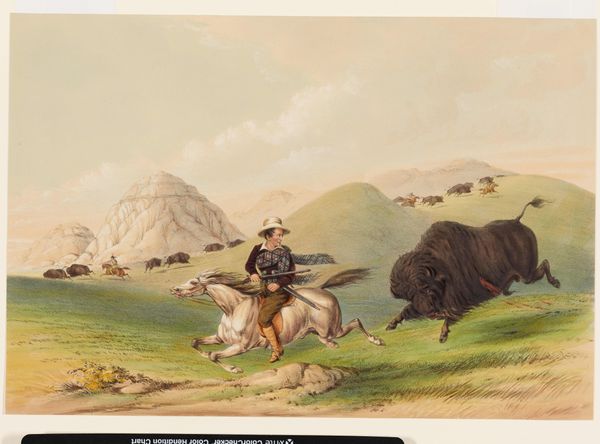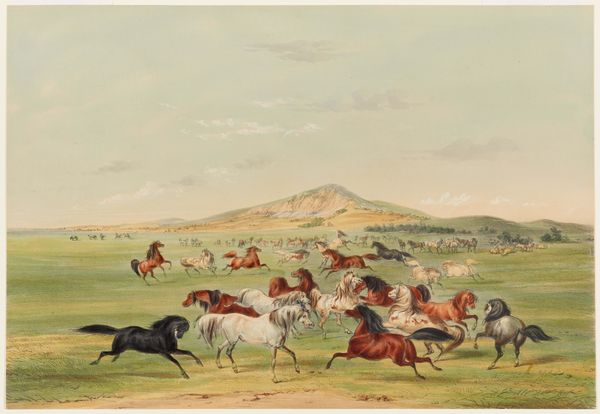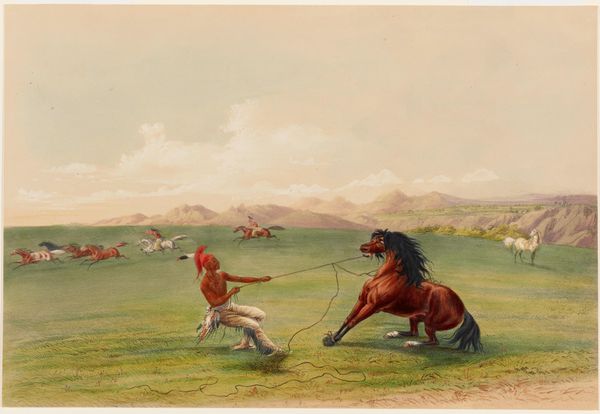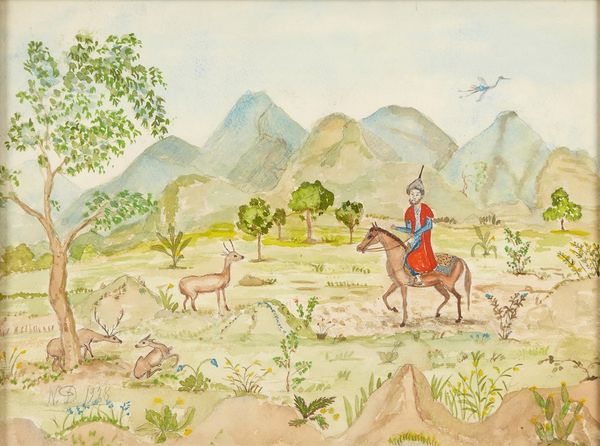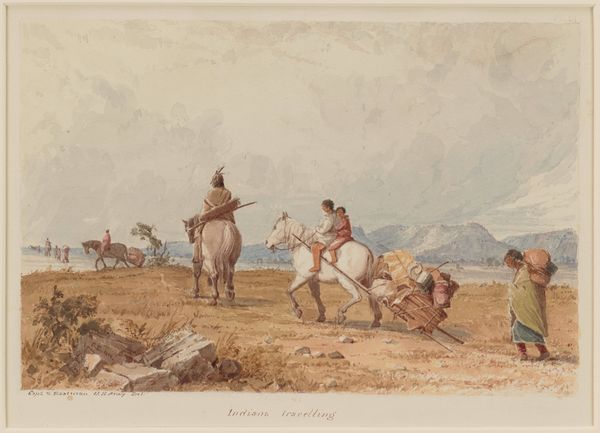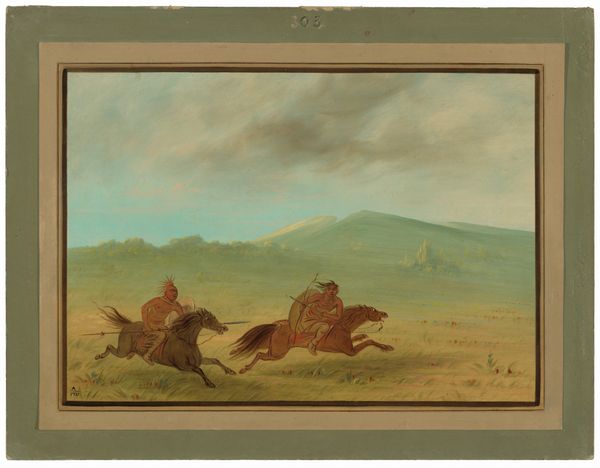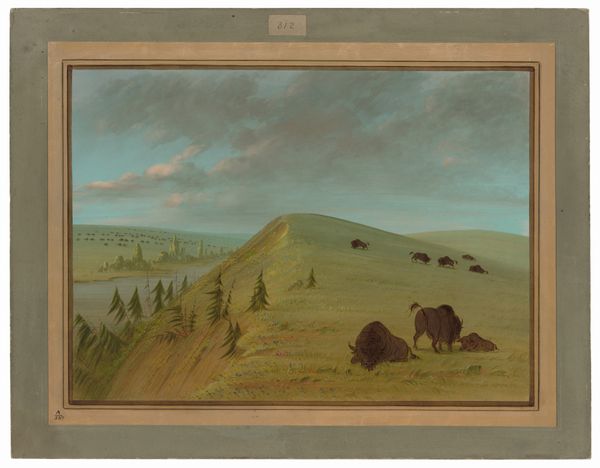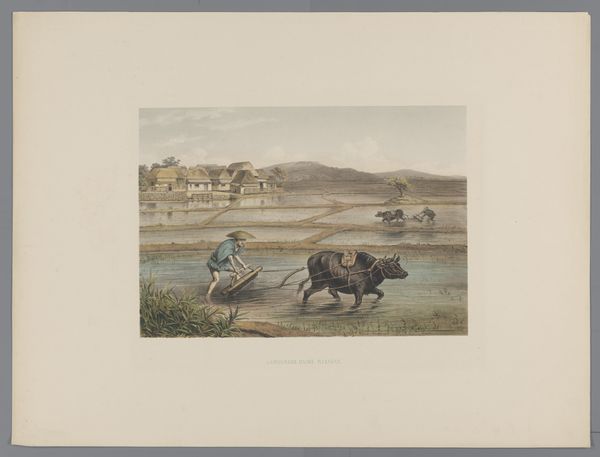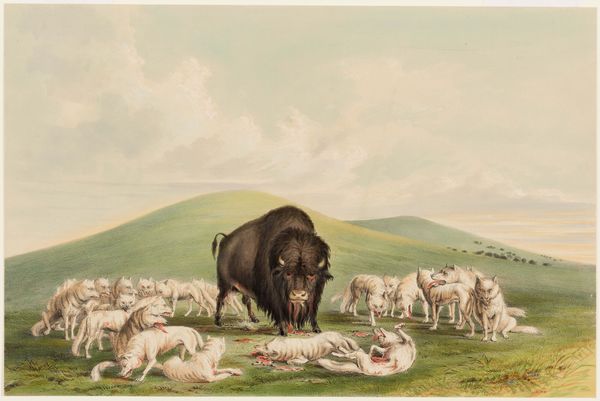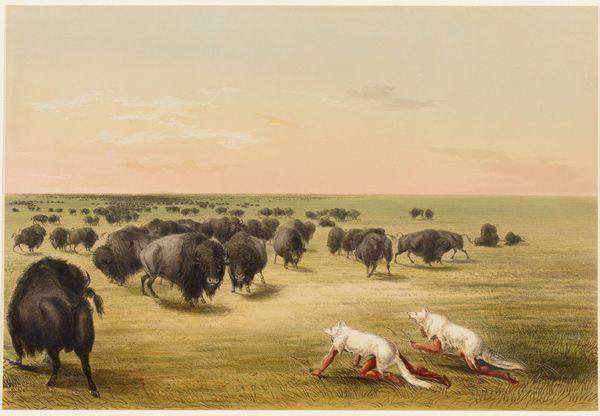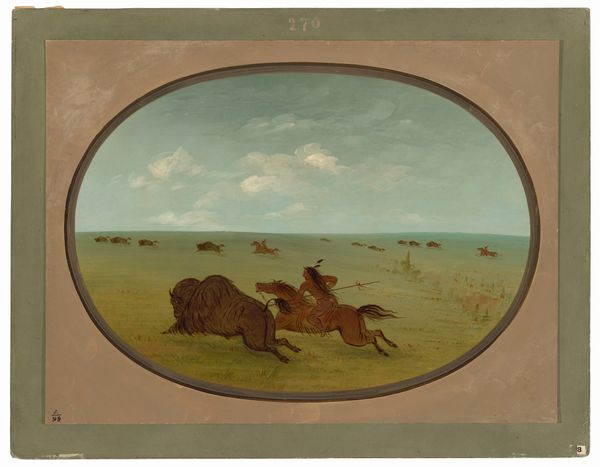
painting, oil-paint
#
water colours
#
narrative-art
#
painting
#
oil-paint
#
landscape
#
watercolor
Dimensions: 12 1/8 x 17 3/4 in. (30.8 x 45.09 cm) (image, sheet)
Copyright: Public Domain
Editor: So, this watercolor print from 1844 is titled "Buffalo Hunt- Chase" by George Catlin. It feels incredibly dynamic, with all the buffalo and riders in motion. What elements of the artwork stand out to you, and what might they signify? Curator: It's fascinating to consider Catlin's watercolors not just as representations, but as products deeply embedded in specific material conditions. Think about the paper he used, the pigments available, and the very act of him, a white artist, portraying Indigenous life and labor. It wasn’t neutral. Editor: You mean it was influenced by cultural bias and economic forces? Curator: Precisely. The materials themselves and their manipulation reflect the power dynamics at play. Catlin chose watercolor, a medium often associated with documentation, perhaps to lend authenticity to his narrative. The choice speaks volumes. Look closer at how the animals' hides are represented through a very loose technique with what appear to be readily available earth tones and inexpensive blues and reds in the Native riders' clothes. What labor and access do you see in that depiction? Editor: I hadn’t considered the watercolor medium as a deliberate choice before, but now it does feel tied to the consumption of the West and the idealization of Indigenous culture. It makes me think about how those factors shape how we see this scene, or any painting of this type from the 1840s for that matter. Curator: And who the intended consumer would be; and therefore, the story the maker intends to share. I'm glad we came back to that point to think about production of the image as we look at the final print. Editor: Thank you for expanding the way I perceive material choices! It encourages me to go deeper.
Comments
No comments
Be the first to comment and join the conversation on the ultimate creative platform.

